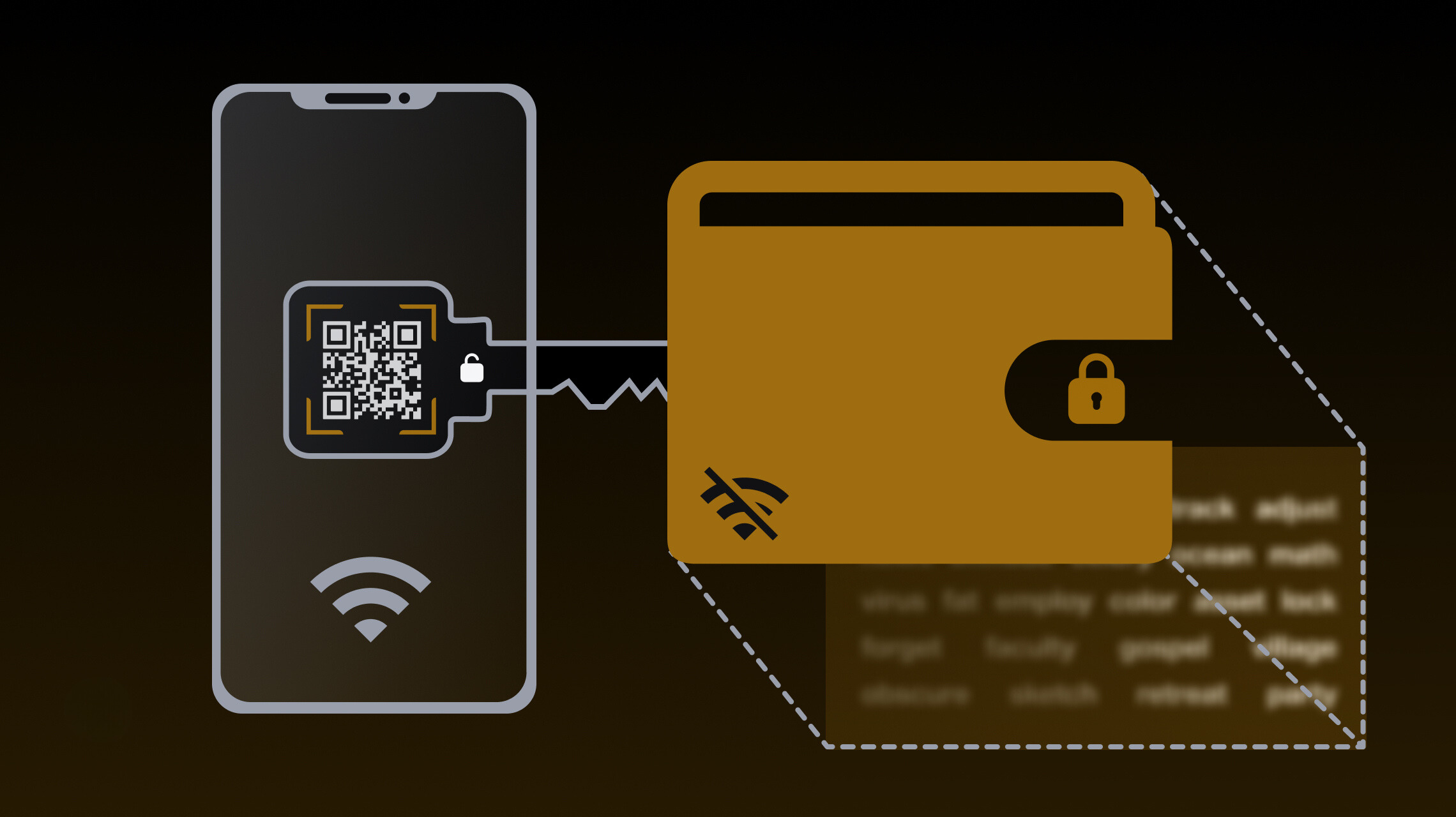Introduction
A hardware wallet is a specialized device designed to store and secure cryptocurrencies. As digital currencies become increasingly popular, it is essential for users to take precautions to protect their assets from theft or loss. Unlike software wallets, which store private keys on an internet-connected device, hardware wallets provide an extra layer of security by keeping the keys offline. This significantly reduces the risk of hacking or unauthorized access.
With cyber threats on the rise, the need for a secure storage solution for cryptocurrencies has become crucial. Hardware wallets offer a reliable and user-friendly way to store digital assets and conduct transactions securely. They have gained widespread popularity among cryptocurrency enthusiasts, investors, and individuals who prioritize the security and integrity of their virtual currencies.
This article will delve into the inner workings of hardware wallets, explaining how they function and why they are considered one of the safest ways to store cryptocurrencies. By understanding the underlying technology and features of hardware wallets, readers will gain valuable insights into how these devices offer peace of mind in the ever-evolving world of digital finance.
We will explore the process of key generation and storage, the role of secure elements, transaction signing, user interfaces, compatibility with different cryptocurrencies, as well as the advantages and limitations of using hardware wallets. By the end of this article, readers will have a comprehensive understanding of the workings of hardware wallets and how they can enhance the security of their digital assets.
What is a hardware wallet?
A hardware wallet is a physical device specifically designed to securely store and manage cryptocurrencies. It serves as an offline storage solution for private keys, which are essential for accessing and managing cryptocurrency funds. Unlike software wallets, which are vulnerable to hacking and malware attacks, hardware wallets keep sensitive data offline, significantly reducing the risk of unauthorized access.
Hardware wallets are typically small, portable devices that resemble USB drives or small calculators. They are equipped with built-in security features and encryption algorithms to ensure the safety of the stored private keys. These devices are designed to be highly resistant to physical tampering and hacking attempts.
When a user sets up a hardware wallet, they generate a unique set of cryptographic keys, which include a public key for receiving funds and a private key for authorizing transactions. The private key is securely stored within the hardware wallet, isolated from the Internet and potential threats. Without the physical device and the correct PIN or passphrase, it is nearly impossible for an attacker to gain access to the private keys.
Hardware wallets are compatible with a wide range of cryptocurrencies, including popular ones like Bitcoin, Ethereum, and Litecoin, as well as lesser-known altcoins. They can support multiple cryptocurrencies within a single device, making them convenient for users who hold various digital assets.
Overall, a hardware wallet offers a secure and convenient way to store and manage cryptocurrencies. By keeping private keys offline and incorporating robust security measures, these devices provide users with peace of mind knowing that their digital assets are protected from potential theft or loss.
How does a hardware wallet work?
A hardware wallet works by securely generating and storing private keys, facilitating transaction signing, and providing a user-friendly interface for managing cryptocurrency assets. Let’s explore the key elements and processes involved in the functioning of a hardware wallet.
Key generation and storage: When setting up a hardware wallet, the device generates a unique set of cryptographic keys, consisting of a public key for receiving funds and a private key for authorizing transactions. The private key, which is the most sensitive piece of information, is securely stored within the hardware wallet, often utilizing special memory chips known as secure elements. The private key never leaves the device, ensuring that it remains safe from potential threats.
Secure element: Many hardware wallets incorporate a secure element, which is a dedicated chip designed to enhance the security of private key storage and transaction signing. These chips use advanced encryption algorithms to protect the keys and resist various types of attacks. The secure element is isolated from the device’s operating system, further reducing the risk of compromise.
Transaction signing: When a user wants to send a cryptocurrency transaction, the hardware wallet securely signs the transaction using the private key stored within its secure element. This ensures that the transaction is authorized and verified by the rightful owner of the cryptocurrency funds. The signed transaction can then be broadcasted to the respective blockchain network for processing.
User interface: Most hardware wallets feature a user-friendly interface, often accessible through a built-in screen and buttons. This interface allows users to interact with the device, view account balances, manage multiple cryptocurrency accounts, and initiate transactions. Some hardware wallets may also have companion applications to enhance the user experience on a computer or smartphone.
Compatibility with different cryptocurrencies: Hardware wallets are designed to support a wide range of cryptocurrencies, enabling users to securely store and manage various digital assets within a single device. Popular hardware wallets often offer compatibility with major cryptocurrencies like Bitcoin, Ethereum, and Ripple, as well as support for numerous altcoins.
By combining these elements, a hardware wallet provides users with a secure and convenient solution for storing and managing their cryptocurrencies. The offline storage of private keys, along with the robust security measures implemented within the device, ensures that the digital assets remain protected from potential threats.
Key generation and storage
In the world of cryptocurrencies, private keys are the fundamental component that grants access and control over digital assets. Key generation and storage are critical aspects of a hardware wallet’s functionality, as they directly impact the security of the stored cryptocurrencies.
When setting up a hardware wallet, the device generates a unique set of cryptographic keys, consisting of a public key and a private key. The public key, as the name suggests, can be shared openly and is used to receive funds. The private key, however, must be kept secret and is used to authorize transactions.
Key generation in a hardware wallet is accomplished through complex mathematical algorithms. These algorithms produce a random sequence of characters that serve as the private and public keys. The randomness ensures the uniqueness and security of the keys.
Once the keys are generated, the private key is securely stored within the hardware wallet. Different hardware wallets employ varying methods for storing the private keys, but the common objective is to keep them isolated and inaccessible from potential theft or unauthorized access. Many hardware wallets utilize specialized secure elements, such as tamper-resistant chips or secure storage modules, to protect the private keys.
The secure element acts as a secure repository for the private keys, ensuring they remain protected even in the event of physical tampering or device compromise. It is often isolated from the device’s operating system and requires additional authentication, such as a PIN or passphrase, to access and utilize the private key for transaction signing.
By storing the private key securely within the hardware wallet, users can eliminate the risk of their keys being exposed in online environments susceptible to hacking attempts or malware attacks. The offline storage of private keys significantly enhances the security of the cryptocurrencies, reducing the vulnerabilities associated with internet-connected software wallets.
It’s important for users to remember that the private key is their ultimate access to their cryptocurrency funds. Losing or compromising the private key can result in permanent loss of the funds. Therefore, hardware wallet users must follow proper backup procedures recommended by the manufacturers, such as writing down the recovery phrase or storing it in a secure location separate from the device itself.
Overall, the key generation and storage process in a hardware wallet ensures the security and integrity of the user’s cryptocurrencies. By generating random and unique keys and securely storing the private key, the hardware wallet provides users with peace of mind, knowing that their digital assets are protected from potential theft or loss.
Secure element
In the realm of hardware wallets, a secure element plays a crucial role in enhancing the security and protection of private keys. It is a specialized chip integrated within the hardware wallet that adds an extra layer of security to the storage and management of cryptocurrencies.
The secure element is designed to be tamper-resistant, preventing unauthorized access to the private keys even if the hardware wallet is physically compromised. This provides users with peace of mind knowing that their digital assets are safeguarded against attacks.
A secure element utilizes advanced encryption algorithms to protect the private keys stored within it. These algorithms ensure that the private keys cannot be easily deciphered or accessed by malicious actors. The secure element is also isolated from the device’s operating system, creating a boundary between the sensitive cryptographic operations and the potential vulnerabilities of the main device.
One of the key benefits of a secure element is its resistance to physical tampering. Hardware wallets are often subjected to rigorous testing and evaluations to ensure they can withstand various attacks, such as probing, physical tampering, or side-channel attacks. In case of any tampering attempt, the secure element is designed to erase or lock down the private keys, rendering them inaccessible.
Additionally, secure elements are designed to resist attacks that aim to extract information from the chip itself. Techniques such as power analysis, electromagnetic analysis, or fault injection attacks are rendered ineffective due to the robust security measures implemented within the secure element.
The secure element also enhances the device’s resistance to malware attacks. Since the private keys are stored within the secure element and isolated from the main device’s operating system, malware present in the device’s environment cannot access or manipulate the keys. This makes hardware wallets considerably more secure compared to software wallets that operate within an online environment and are susceptible to malware infiltration.
It’s worth noting that the security of a hardware wallet depends not only on the presence of a secure element but also on how effectively it has been implemented and tested. Users should research and select hardware wallets from reputable manufacturers renowned for their robust security measures.
With the integration of a secure element, hardware wallets provide users with an additional layer of protection for their private keys. By utilizing advanced encryption algorithms, resisting physical tampering, and isolating the cryptographic operations, secure elements enhance the security of hardware wallets and the overall protection of digital assets.
Transaction signing
Transaction signing is a critical process that ensures the authenticity and integrity of cryptocurrency transactions. It plays a vital role in the functioning of hardware wallets, allowing users to securely authorize and validate the transfer of their digital assets.
When a user wants to initiate a transaction using a hardware wallet, the device uses the private key stored within its secure element to digitally sign the transaction. This signature acts as a unique identifier and proof that the transaction has been authorized by the rightful owner of the cryptocurrency funds.
The transaction signing process involves several steps:
- Transaction creation: The user inputs the necessary details, such as the recipient’s address, the amount to be sent, and any additional transaction parameters, into the hardware wallet’s user interface. The device then generates the raw transaction data.
- Data verification: The hardware wallet verifies the details of the transaction to ensure that it is accurate and complete. This includes verifying the recipient’s address and the available balance to cover the transaction.
- Private key usage: Once the transaction data is verified, the hardware wallet uses the private key stored within its secure element to create a digital signature for the transaction.
- Signature creation: The hardware wallet applies a cryptographic algorithm to the transaction data and the private key to create a unique digital signature. This signature is specific to the transaction and cannot be forged or manipulated.
- Transaction broadcast: The signed transaction, along with the digital signature, is then sent out to the respective blockchain network. The network nodes validate the signature using the corresponding public key, ensuring the authenticity and integrity of the transaction.
The hardware wallet’s ability to securely sign transactions is a key feature that sets it apart from software wallets. By keeping the private key offline within the secure element, hardware wallets eliminate the risks associated with exposing the key in an online environment.
Furthermore, hardware wallets often incorporate additional security measures to protect the transaction signing process. Some devices require a physical button or confirmation from the user to authorize the transaction signing, mitigating the risk of unauthorized or accidental transactions.
By utilizing hardware wallets for transaction signing, users can be confident that their funds are being transferred securely and with the assurance that the transaction cannot be tampered with. This provides peace of mind when engaging in cryptocurrency transactions, knowing that the hardware wallet’s robust security measures are protecting their digital assets.
User interface
The user interface of a hardware wallet is an essential component that allows users to interact with the device, manage their cryptocurrency assets, and initiate transactions. It presents a user-friendly platform for accessing the various features and functionalities of the hardware wallet.
Hardware wallets typically feature a built-in screen and buttons that enable users to navigate through menus, enter PINs or passphrases, and confirm transactions. The user interface is designed to be intuitive and straightforward, ensuring that both experienced and novice users can easily navigate and use the device.
The user interface of a hardware wallet offers several key functions:
- Account management: Users can manage multiple cryptocurrency accounts within their hardware wallet. The user interface provides options to add, remove, and switch between different accounts, allowing users to organize and access their assets conveniently.
- Transaction management: Users can initiate and review transactions through the user interface. They can input the recipient’s address, specify the amount to be sent, and add any additional transaction details. The interface also presents transaction history, allowing users to view past transactions and their status.
- Balance tracking: Hardware wallets often display the balances of the held cryptocurrencies directly on the device’s screen. This feature provides users with a quick overview of their assets, allowing them to monitor their holdings without the need to access external platforms or software.
- Settings and customization: The user interface allows users to configure various settings and preferences of the hardware wallet. This can include options such as language selection, PIN or passphrase changes, display brightness settings, and firmware updates. Customization options help users tailor the device to their personal preferences.
- Verification and confirmation: The user interface prompts users to verify and confirm actions to ensure the accuracy of inputs. For example, when initiating a transaction, the user may be asked to review the transaction details before proceeding with the confirmation, reducing the risk of errors or unauthorized actions.
Some hardware wallets also offer companion applications that provide extended functionality and a more comprehensive user experience. These applications can be installed on computers or smartphones and enable users to view detailed transaction history, manage account preferences, and interact with additional blockchain features.
The user interface design of hardware wallets focuses on simplicity, security, and ease of use. It aims to provide a seamless and intuitive experience for users to interact with their cryptocurrency assets securely. Additionally, the interface is often designed to be compact and easily readable on the device’s small screen.
By presenting a user-friendly interface, hardware wallets allow individuals, regardless of their technical expertise, to securely manage their cryptocurrencies and engage in transactions with confidence.
Compatibility with different cryptocurrencies
Hardware wallets are designed to be compatible with a wide range of cryptocurrencies, offering users the flexibility to store and manage various digital assets within a single device. This compatibility is a key advantage for individuals who hold different types of cryptocurrencies.
Popular hardware wallets typically support major cryptocurrencies such as Bitcoin (BTC), Ethereum (ETH), and Litecoin (LTC). These wallets have built-in features and functionalities specifically tailored to these cryptocurrencies, allowing users to securely store, send, and receive their digital assets.
In addition to the major cryptocurrencies, hardware wallets often support numerous altcoins. Altcoins refer to alternative digital currencies other than Bitcoin. Some popular altcoins supported by hardware wallets include Ripple (XRP), Bitcoin Cash (BCH), Stellar Lumens (XLM), and many others.
Hardware wallet manufacturers continuously update their devices’ firmware to include support for new cryptocurrencies as they emerge in the market. This ensures that users can access and manage a wide variety of digital assets without the need to switch between multiple wallets.
Each hardware wallet may have its own specific list of supported cryptocurrencies. Users should research and check the compatibility list provided by the manufacturer before purchasing a hardware wallet to ensure it supports the specific cryptocurrencies they intend to store.
When using a hardware wallet with multiple cryptocurrencies, the user interface of the device or its companion application may provide options to switch between different cryptocurrency accounts. This feature simplifies management and allows users to conveniently view the balances and initiate transactions for each cryptocurrency they hold.
While hardware wallets strive to support a broad range of cryptocurrencies, it’s important to note that the level of support and functionality for each cryptocurrency may vary. Some cryptocurrencies may have more limited features or require additional software installations for full compatibility.
Overall, the compatibility of hardware wallets with different cryptocurrencies offers users flexibility and convenience. It allows them to consolidate their digital assets into a single secure device, simplifying the management and safeguarding of their cryptocurrency portfolio.
Advantages of using a hardware wallet
Using a hardware wallet to store and manage cryptocurrencies offers several significant advantages over other storage options. Let’s explore the key benefits of using a hardware wallet:
- Enhanced security: Hardware wallets provide an extra layer of security by storing private keys offline, away from potential threats like hackers and malware attacks. With the private keys kept within the secure element of the device, the risk of unauthorized access is significantly reduced.
- Protection against physical theft: Hardware wallets are designed to be portable and can be easily stored in a safe place. This protects cryptocurrencies from physical theft or loss that may occur with other storage methods, such as keeping private keys on a computer or paper wallet.
- User-friendly interface: Hardware wallets feature user-friendly interfaces that make it easy for users to manage their cryptocurrencies, view account balances, and initiate transactions. The intuitiveness of the interface caters to both experienced users and newcomers to the world of cryptocurrencies.
- Compatibility with various cryptocurrencies: Hardware wallets support a wide range of cryptocurrencies, ensuring that users can securely store and manage multiple digital assets within a single device. This eliminates the need for multiple wallets and simplifies portfolio management.
- Protection against malware: Since the private keys are stored offline, hardware wallets are highly resistant to malware attacks that often target software wallets. Malicious software cannot access the private keys stored within the hardware wallet, providing users with added protection against malware infiltration.
- Transaction confirmations: Hardware wallets require user confirmation for transaction signing, reducing the risk of accidental or unauthorized transfers. Users can review transaction details before approving them, ensuring accuracy and preventing any unintended or fraudulent transactions.
- Back-up and recovery options: Hardware wallets typically offer built-in back-up and recovery options, such as recovery phrases or seed words. These allow users to restore their wallets in case of loss, damage, or theft of the device, ensuring access to their funds is not permanently lost.
By utilizing a hardware wallet, users can have peace of mind knowing that their cryptocurrencies are securely stored and easily accessible. The enhanced security, user-friendly interface, compatibility with various cryptocurrencies, and protection against physical theft and malware make hardware wallets an ideal choice for individuals seeking advanced security measures for their digital assets.
Risks and limitations of hardware wallets
While hardware wallets offer enhanced security and convenience for storing and managing cryptocurrencies, it is important to be aware of the potential risks and limitations associated with these devices. Let’s explore some of these considerations:
- Physical damage or loss: Like any electronic device, hardware wallets are susceptible to physical damage or loss. If a hardware wallet is damaged or lost, it may result in the permanent loss of access to the stored cryptocurrencies. It is crucial to have proper backup procedures in place, such as storing recovery phrases securely, to mitigate this risk.
- Counterfeit devices: The popularity of hardware wallets has led to the emergence of counterfeit devices in the market. These fake wallets often have poor security measures, making them vulnerable to attacks and unauthorized access to private keys. It is vital to purchase hardware wallets from reputable manufacturers or authorized resellers to ensure the authenticity and integrity of the device.
- Compatibility limitations: While hardware wallets aim to support a wide range of cryptocurrencies, not all cryptocurrencies may be compatible or have full functionality on every device. It is important to verify the compatibility list provided by the manufacturer to ensure that the desired cryptocurrencies are supported before making a purchase.
- Dependence on device reliability: Hardware wallets rely on the reliability and integrity of the device itself. In case of device malfunction or software bugs, there is a potential risk of being unable to access the stored cryptocurrencies. It is advisable to regularly update the device’s firmware and keep up with any security patches or bug fixes provided by the manufacturer.
- Limited transaction visibility: Hardware wallets are designed to keep private keys offline, which limits the visibility of transactions. While this enhances security, it may pose challenges when users need to provide proof of transaction history for auditing or regulatory purposes. External blockchain explorers or companion applications may need to be utilized to access comprehensive transaction records.
- Unfamiliarity with technology: Individuals new to cryptocurrencies or less tech-savvy users might find hardware wallets initially complex to set up and use. Familiarizing oneself with the device’s interface and understanding the security processes is crucial to avoid accidental mistakes or loss of funds. It is recommended to carefully read the manufacturer’s instructions and seek assistance if needed.
Considering these risks and limitations and taking appropriate measures to address them will help users navigate the world of hardware wallets confidently. It is essential to conduct thorough research, follow best practices for security and backup, and stay informed about the latest developments and firmware updates to ensure the safe and effective utilization of hardware wallets.
Conclusion
Hardware wallets provide a secure and user-friendly solution for storing and managing cryptocurrencies. By keeping private keys offline within secure elements, these devices offer enhanced protection against hacking, malware attacks, and physical theft. The compatibility with various cryptocurrencies allows users to conveniently manage multiple digital assets within a single device.
The key generation and storage process ensures the security and integrity of private keys, while the transaction signing feature allows users to authorize transactions securely. The intuitive user interface simplifies the management of accounts, balances, and transactions, catering to both experienced and novice users. Additionally, hardware wallets offer backup and recovery options to mitigate the risk of permanent loss of funds.
Despite their advantages, it is important to be mindful of the potential risks and limitations associated with hardware wallets. Physical damage or loss, counterfeit devices, compatibility limitations, reliability of the device, limited transaction visibility, and unfamiliarity with technology are factors that require attention and proactive measures.
Overall, hardware wallets are a valuable tool for individuals seeking to secure their cryptocurrency assets. With proper research, cautious usage, and adherence to security best practices, users can leverage the benefits of hardware wallets while minimizing the potential risks. These devices serve as a vital component for those who prioritize the security and integrity of their digital assets in the dynamic and evolving landscape of cryptocurrencies.

























